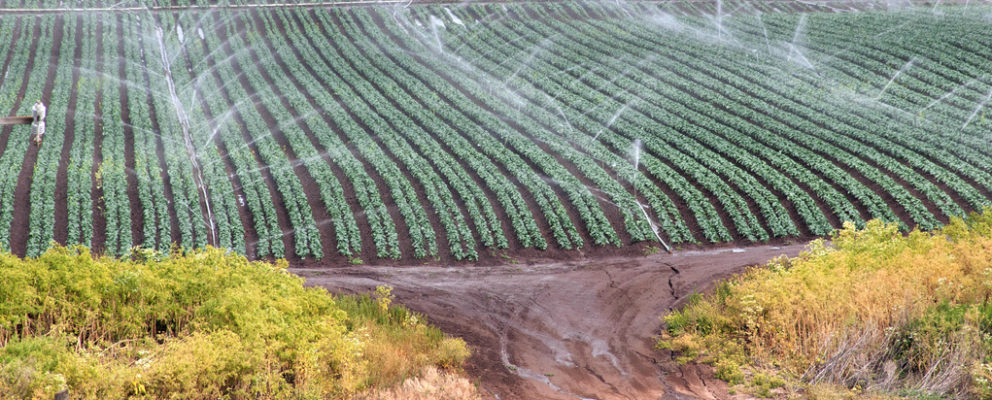Water access key driver of long-term agricultural productivity in western U.S.
By Silke Schmidt
It’s hard to overestimate the role of water in agriculture.
“Almost anywhere in the world where water is scarce, agriculture uses most of it,” says CEnREP affiliate Eric Edwards. “In the arid part of our country, about 80% of all water withdrawals are used for agricultural irrigation.”
That’s a strong link between a natural resource and an economic output. And yet, a detailed study of irrigation and agricultural productivity gains over time had not yet been done for the western United States. So Edwards, an assistant professor in the Department of Agricultural and Resource Economics at NC State and CEnREP affiliate, and his collaborator Steven Smith jumped on the opportunity to fill that gap.
The result is a recent publication in the Journal of Economic History. The authors showed that improved access to groundwater and the construction of large dams contributed to 90% of the total annual increase in crop production in the 17 arid western states after 1940. Compared to areas with only small streams, that amounted to an extra $19 billion per year.
Edwards notes two caveats to those numbers. “One is that we can’t isolate irrigation from other co-occurring benefits: more tractors, improved fertilizers, new crop varieties, rural electrification and cheaper energy for pumping groundwater,” he explains. “The other limitation is a lack of data for estimating the impact of pre-1940 improvements, such as smaller dams and irrigation ditches.”
The study’s results were derived from the United States Department of Agriculture census, administered 18 times between 1910 and 2007. The authors treated irrigation infrastructure developed up to 1910 as the baseline up to 1940, as it remained quite stable during these 30 years. An important contribution of the study is the use of GIS methods to digitally combine county-level economic variables with hydrologic data from the United States Geological Survey.
The authors identified two main drivers of gains in agricultural productivity: the start of the surface water era with the 1936 opening of the Hoover Dam and the introduction of center pivot irrigation in the mid-1940s, which kicked off the groundwater era. Comparing the relative impact of the two, only 6% of the productivity gains were attributed to surface water access alone. That emphasizes the importance of regulating and managing groundwater extraction.
“Since groundwater is so important for agricultural productivity, our study drives home the need to prevent its rapid depletion,” says Edwards. “Without careful management, we believe a reversal of the past gains is possible.”
Examples of significant water table depletion include the Ogallala Aquifer—which irrigates much of the Midwest—and the Central Valley aquifer system in California. They illustrate the challenge of establishing a price tag for a “free” resource like water that reflects the actual opportunity cost of using it.
The U.S. example also provides important lessons for developing countries with arid regions and large populations to feed, such as China and India.
“Our results suggest that the ability of large surface water dams to increase production via agricultural irrigation is limited,” Edwards says. “However, the potential gains from investing in groundwater extraction, with appropriate management and oversight, are large.”

